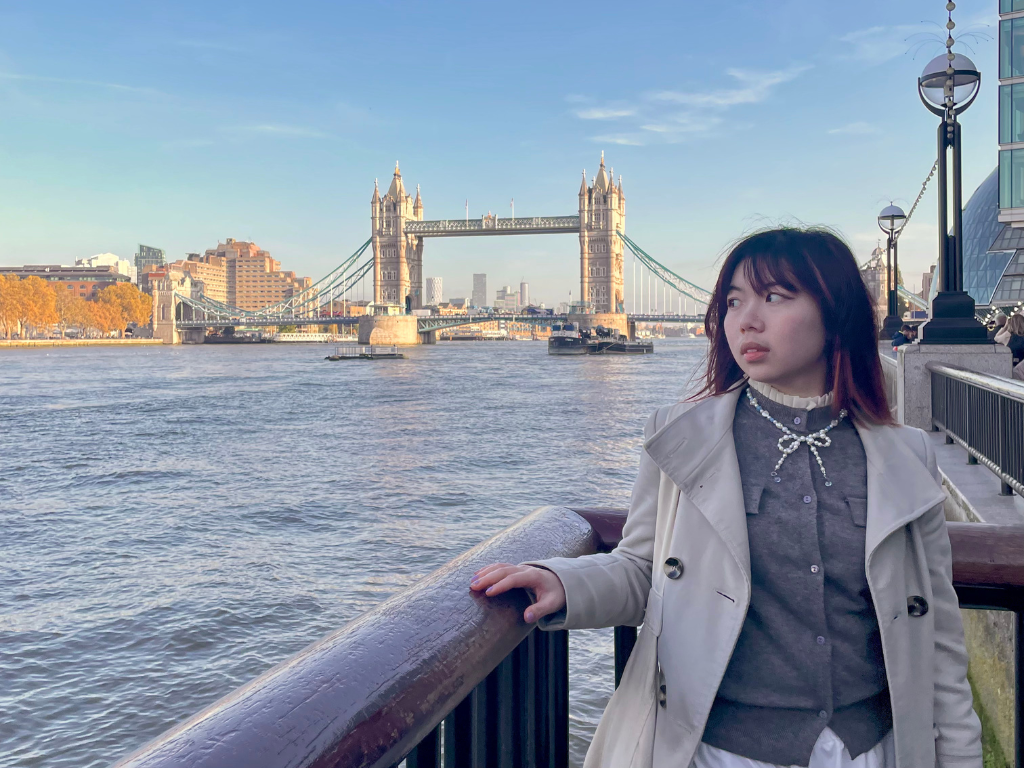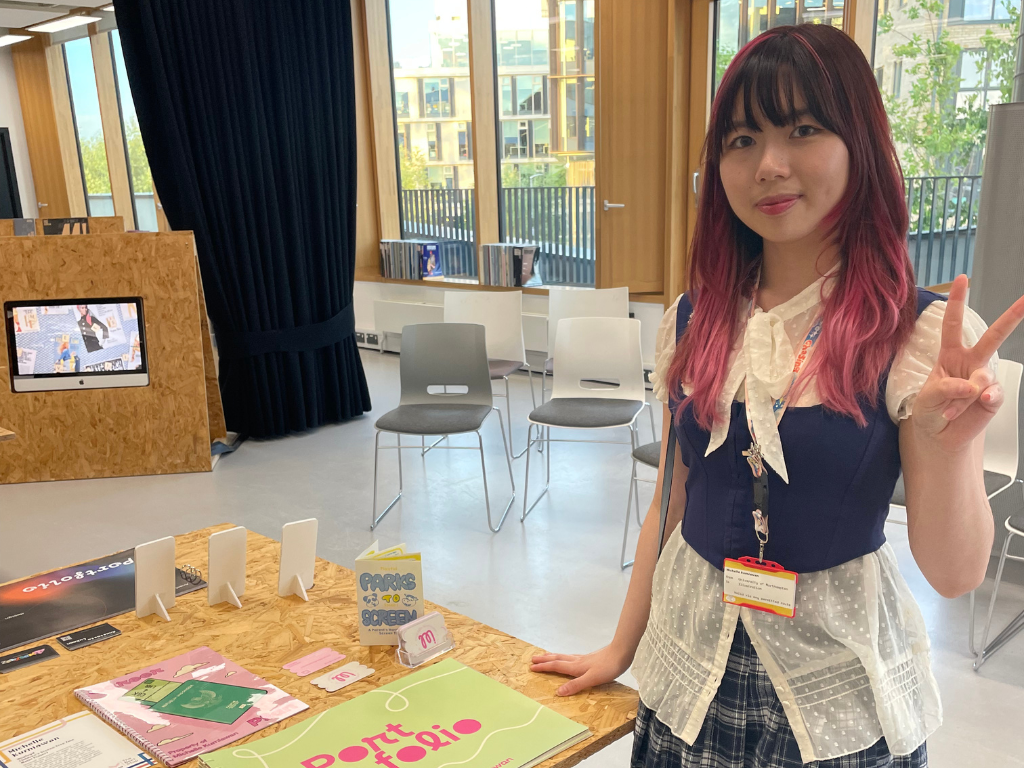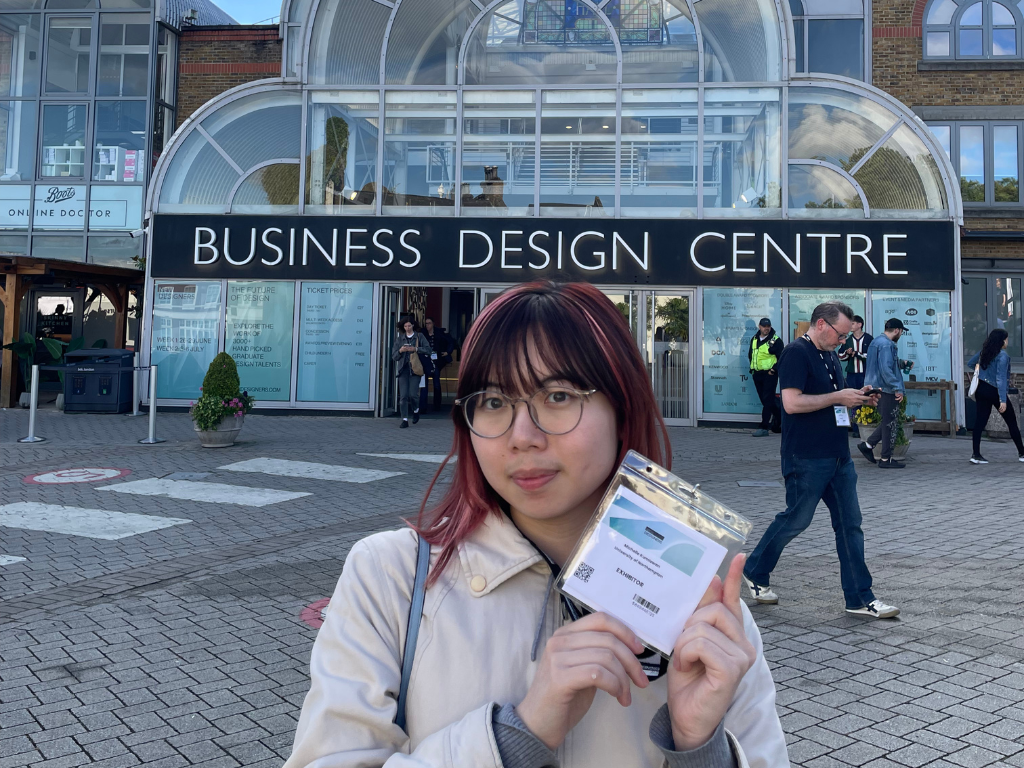
When the people around graphic designer Michelle Kurniawan heard she was going to pursue a degree in graphic design, they told her that careers in arts and design won’t make any money.
While that depends on where you’re working, for Kurniawan, who hails from Indonesia, the advice is pretty sound.
“Back in Indonesia, you’ll get paid really, really low,” says Kurniawan. “I could earn a month’s worth of Indonesia’s salary in a week in the UK. And that’s just my part-time job.”
That’s about US$401 (IDR 6,566,667) monthly.
Worse yet, the graphic design scene in Indonesia isn’t the healthiest.
Cardrilla Bareno, a Jakarta-based designer, told the Jakarta Post that the industry can be “demoralising, for example, overworking as a form of loyalty and passion towards one’s workplace” and can lead to burnout.
Despite all the negatives, Kurniawan stuck to her passion and hasn’t looked back since.

Kurniawan, graphic designer, by the Tower Bridge in London, UK. Source: Michelle Kurniawan
Pursuing a degree abroad to fulfil her dreams
Born and raised in Indonesia, Kurniawan knew she wanted to complete a degree in the arts. In Year Eight, she would put time aside to practise illustrations and even carry a sketchbook around at all times.
When it came time to choose her higher education pathway, it was simple — a higher national diploma in graphic design from UniSadhuGuna International College (USG Education) in Jakarta.
Curriculum aside, the programme offered her a chance to study for one or two years in Indonesia and complete her bachelor’s degree abroad later on — something that Kurniawan knew she wanted to take complete advantage of.
Her dream destination? The UK.

Kurniawan, graphic designer, showcasing her portfolio and work at her university. Source: Michelle Kurniawan
“I had a whole range of more prominent or more popular universities to choose from, such as Coventry University, Newcastle University, and University of Bristol, but my top priority was to attend a university that offered a scholarship,” says Kurniawan.
Receiving a scholarship would help relieve her parents’ financial burden, mainly because they would have to fund her twin, who would be going abroad at the same time as she would.
When looking for scholarships, one university stood out: the University of Northampton (UON).
“UON was offering scholarships for Indonesian students, and to apply, I had to write an essay for them,” says Kurniawan. “I managed to score a 40% scholarship, and while I received several other scholarships, they weren’t as big as those from UON.”
“Sometimes, I’m ashamed to admit that I accepted UON just because of its scholarship, but after attending the university, it’s so much more than that,” she shares.
Today, Kurniawan has graduated from UON with a BA (Hons) in Graphic Communication Design.

Kurniawan, graphic designer, during her graduation from the University of Northampton. Source: Michelle Kurniawan
The biggest advantages of attending a less popular school
Everyone knows the big names in the higher education world. From the Ivy Leagues to the Russell Group universities, name them and everyone would nod along appreciatively.
But just because these are some of the most prestigious institutions in the world doesn’t mean they’re the best option for you or will guarantee success in your future or career.
Kurniawan, too, thought that attending a more prominent university was the right choice. That is, until she started her studies at UON.
“When I got to Northampton, I realised that there were many international students from around the world,” she says. “Although I had only two other foreign nationals in my class, being my programme wasn’t popular amongst international students, it was still a healthy number.”
That’s not all — the town of Northampton is home to a lively art scene, perfect for a budding graphic designer like Kurniawan.
Northampton has strong ties to the Arts and Crafts Movement, with a focus on craftsmanship and handmade goods.
The town is also rich in industrial heritage, including the global success of Dr. Martens boots, which were invented and produced in the town, highlighting the town’s legacy of quality craftsmanship and innovation.
Today, the principles of the Arts and Crafts Movement live on in Northampton. Local artisans continue to produce handcrafted goods and contemporary designs. It’s also often showcased in art galleries, exhibitions, and public art project showcases.
Speaking about exhibitions, the Northampton Museum and Art Gallery has 3,500 pieces of art dating from 1,100 to the present day. Most of the collection is 2D work in various media, including oils, watercolours, drawings, prints, and mixed media.

Kurniawan (right) alongside her twin (left) during their graduation from the University of Northampton. Source: Michelle Kurniawan
The good and bad of Indonesia’s art scene
Returning home to pursue a career as a graphic designer is not currently a part of Kurniawan’s plan, primarily due to how the industry is perceived locally.
“Back in Indonesia, not a lot of people appreciate art and design, and there are some individuals who don’t think the field is necessary to everyday life,” she says. “I would say it’s due to the generational gaps. The younger generation may think completing an art degree is practical; however, the older generation may not think it is.”
This deters qualified and highly skilled graphic designers in the country from staying on as they often face issues like underpaid labour, a lack of appreciation for design as a professional field, and a perception that graphic design is merely decorative.
A 2012 study found that Indonesians often objectify designs or view them as a form of communication in a very premature stage of understanding without knowing what they mean — only because of how teachers, organisations, or writers teach them.
Grafis Masa Kini (GMK) spoke with five Indonesian creative workers who decided to pursue a career abroad, and a common issue they faced was low pay and an underappreciation of the creative labour in the country.

Kurniawan, graphic designer, at the Business Design Centre in London, UK, for an exhibition. Source: Michelle Kurniawan
The average annual salary for an entry-level graphic designer with one to three years of experience is US$11,829. Meanwhile, a senior-level designer with eight years of experience earns an average of US$20,216.
Gerson Gilrandy shared with GMK that low pay was not the only factor that pushed him to look for a career abroad; it was the attitude of local Indonesian clients.
“The majority of clients are very difficult to educate,” says Gilrandy. “Indonesia is very rich in culture, but unfortunately, what is being implemented now is that these cultures are close-minded with laws of the few who are afraid of the taboo.”
Despite the industry’s hardships, Kurniawan hopes that one day, Indonesia will start pushing for initiatives to help the graphic design industry grow.
“Indonesia also has a lot of potential in the art scene,” she says. “One day, it will become an appreciated industry.”










